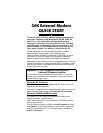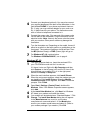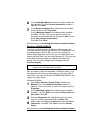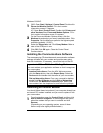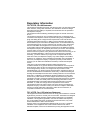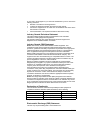
7
Regulatory Information
FCC 47CFR, Part 68 Statement
This equipment complies with 47CFR, Part 68 of the rules. The unit bears a label
which contains, among other information, the certification number and Ringer
Equivalence Number (REN). If requested, this information must be provided to
the telephone company.
This equipment uses the following standard jack types for network connection:
RJ11C.
This equipment contains an FCC-compliant modular jack. It is designed to be
connected to the telephone network or premises wiring using compatible modular
plugs and cabling which comply with the requirements of FCC Part 68 rules.
The Ringer Equivalence Number, or REN, is used to determine the number of
devices which may be connected to the telephone line. An excessive REN may
cause the equipment to not ring in response to an incoming call. In most areas,
the sum of the RENs of all equipment on a line should not exceed five (5.0).
In the unlikely event that this equipment causes harm to the telephone network,
the telephone company can temporarily disconnect your service. The telephone
company will try to warn you in advance of any such disconnection, but if
advance notice isn't practical, it may disconnect the service first and notify you as
soon as possible afterwards. In the event such a disconnection is deemed
necessary, you will be advised of your right to file a complaint with the FCC.
From time to time, the telephone company may make changes in its facilities,
equipment, or operations, which could affect the operation of this equipment. If
this occurs, the telephone company is required to provide you with advance
notice so you can make the modifications necessary to obtain uninterrupted
service.
There are no user serviceable components within this equipment.
It shall be unlawful for any person within the United States to use a computer or
other electronic device to send any message via a telephone facsimile unless
such message clearly contains, in a margin at the top or bottom of each
transmitted page or on the first page of the transmission, the date and time it is
sent and an identification of the business, other entity, or individual sending the
message and the telephone number of the sending machine or of such business,
other entity, or individual. The telephone number provided may not be a 900
number or any other number for which charges exceed local or long distance
transmission charges. Telephone facsimile machines manufactured on and after
December 20, 1992, must clearly mark such identifying information on each
transmitted message. Facsimile modem boards manufactured on and after
December 13, 1995, must comply with the requirements of this section.
This equipment cannot be used on public coin phone service provided by the
telephone company. Connection to Party Line Service is subject to state tariffs.
Contact your state public utility commission, public service commission, or
corporation commission for more information.
FCC 47CFR, Part 15 Emissions Statement
This equipment has been tested and found to comply with the limits for a Class B
digital device, pursuant to 47CFR, part 15 of the rules. These limits are designed
to provide reasonable protection against harmful interference in a residential
installation. This equipment generates, uses and can radiate radio frequency
and, if not installed and used in accordance with the instructions, may cause
harmful interference to radio communications.
However, there is no guarantee that interference will not occur in a particular
installation. If this equipment does cause harmful interference to radio or
television reception, which can be determined by turning the equipment off and



